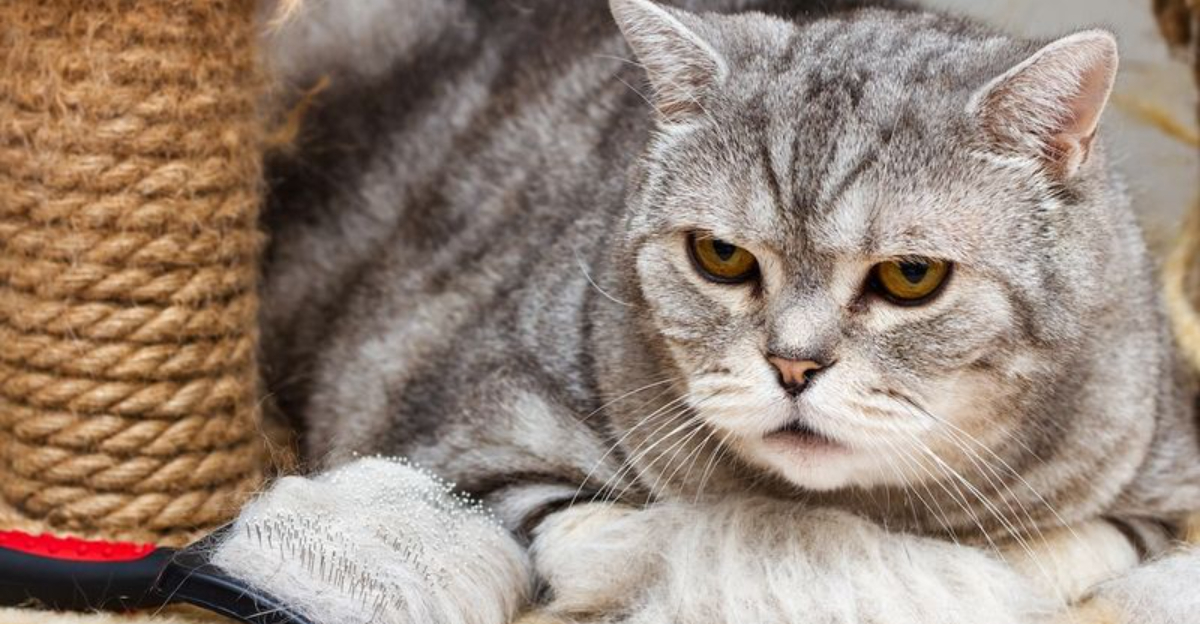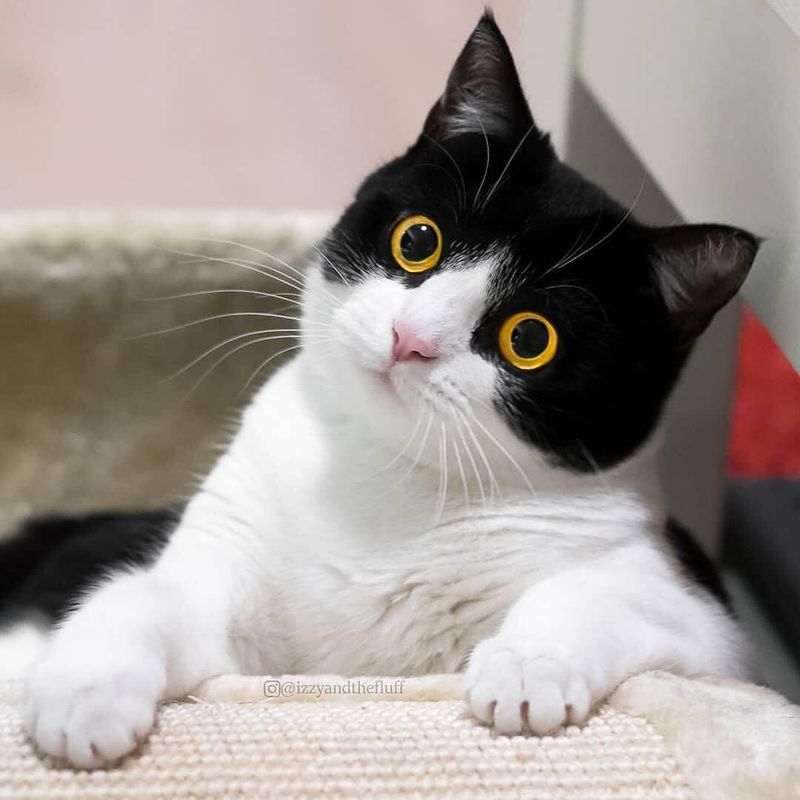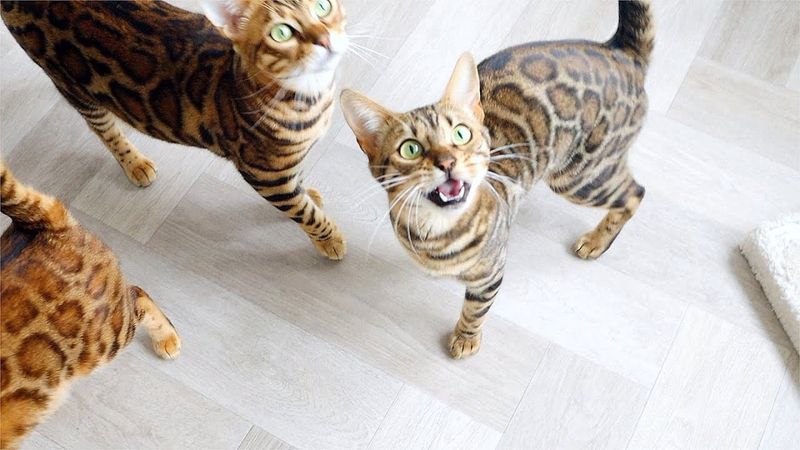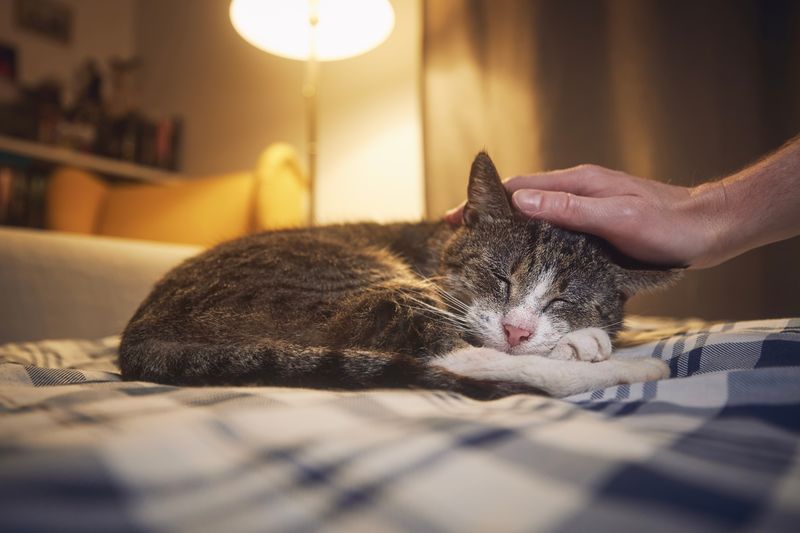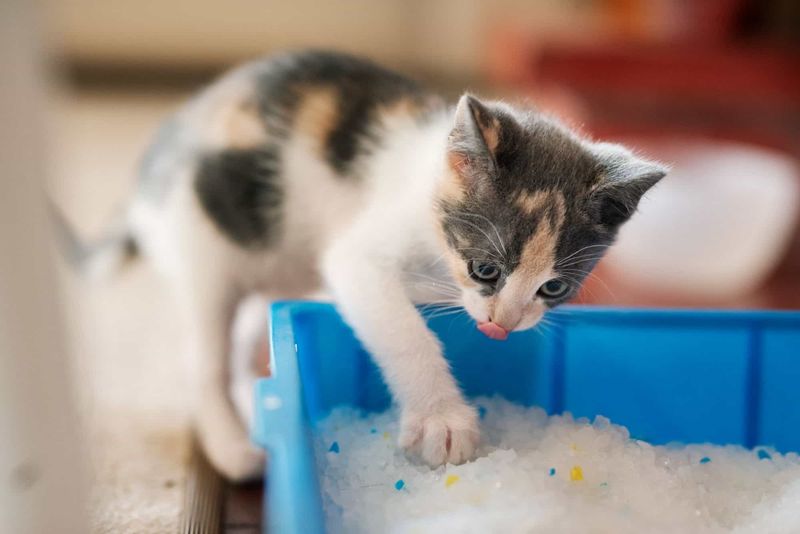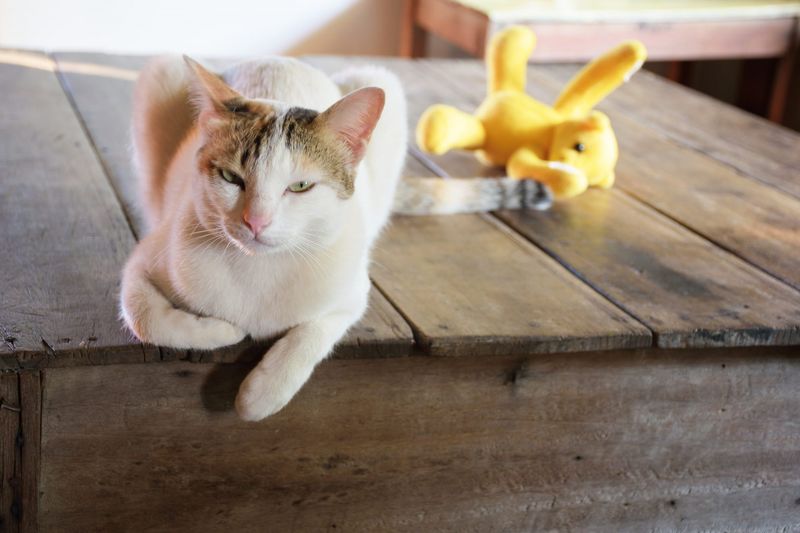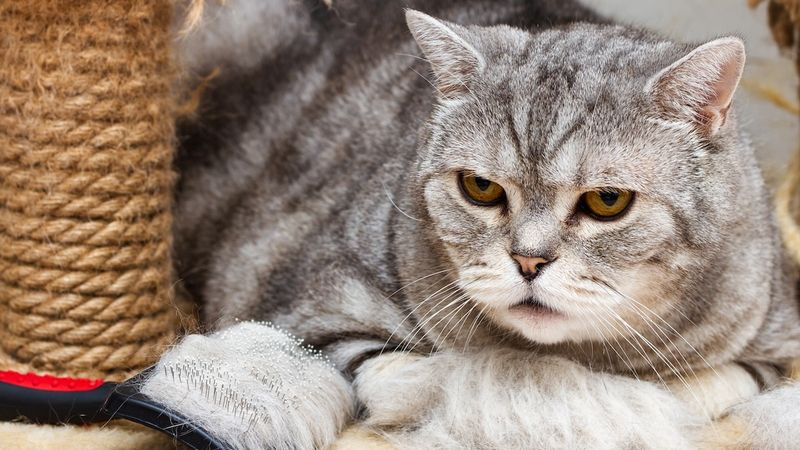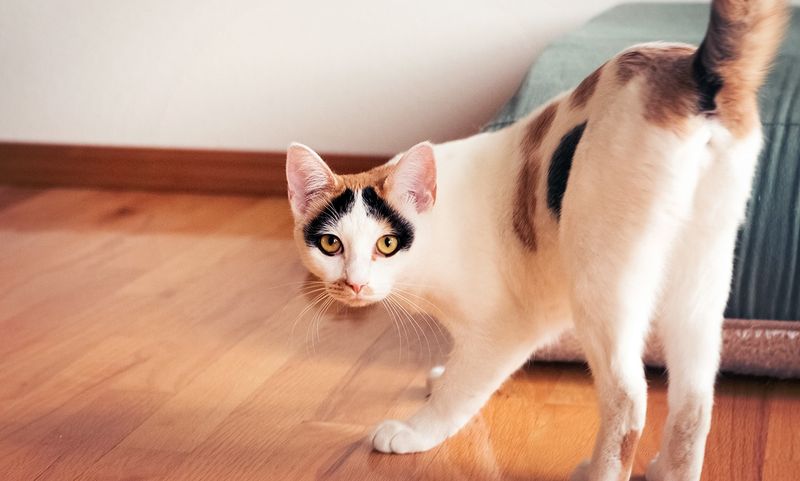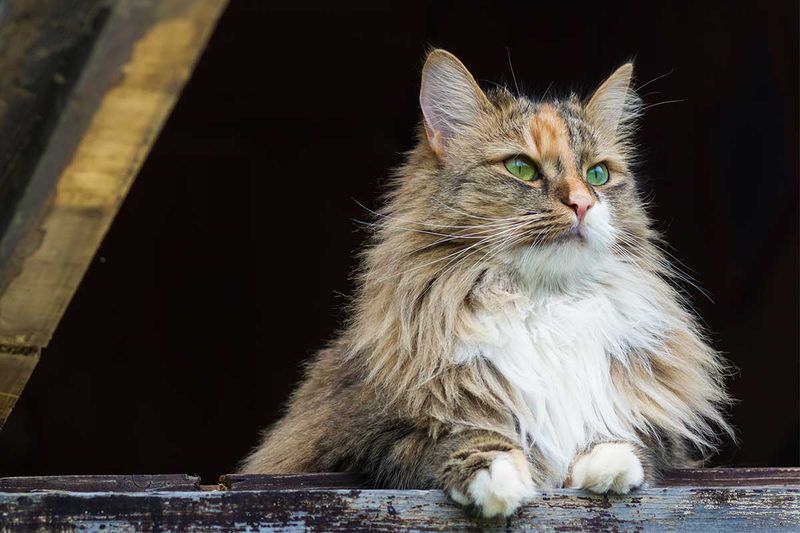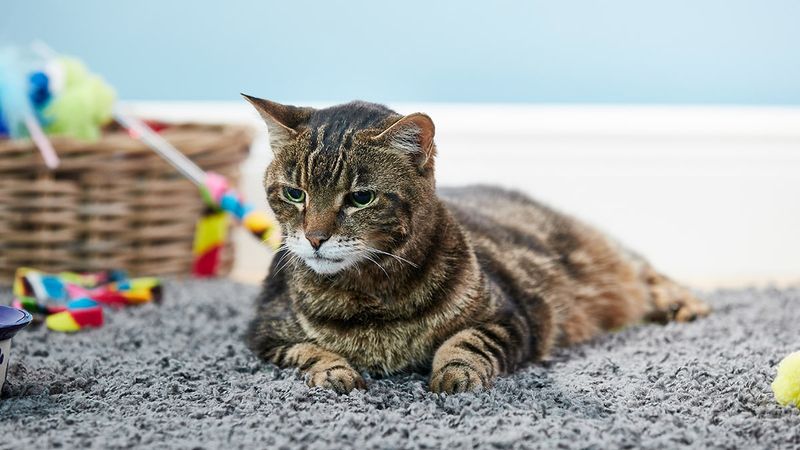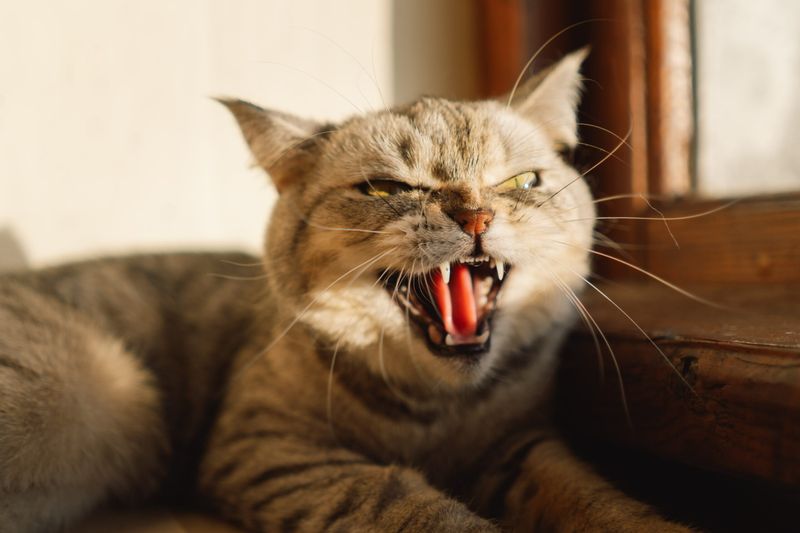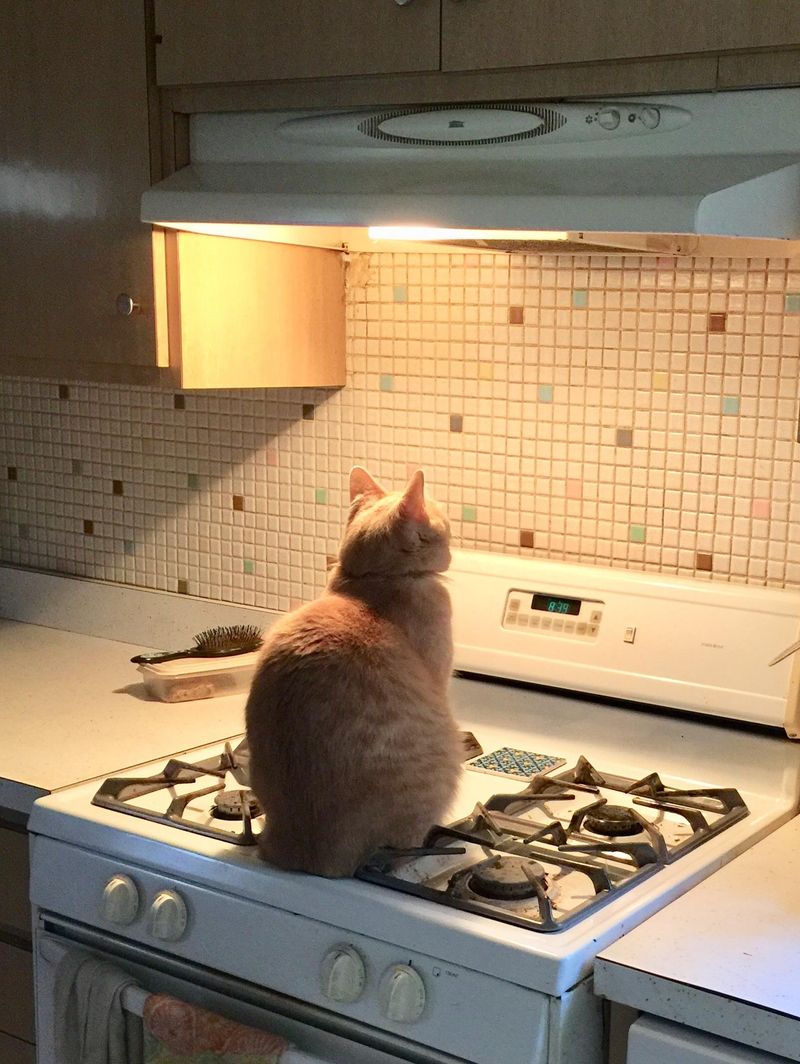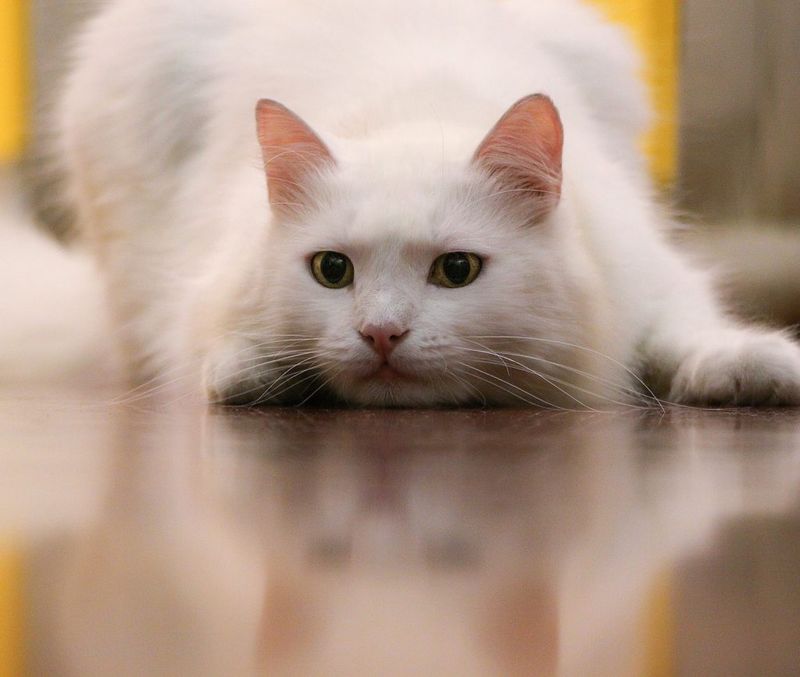📖 Table of Content:
- 1. Disorientation
- 2. Increased Vocalization
- 3. Changes in Sleep Patterns
- 4. Litter Box Issues
- 5. Reduced Interest in Social Interaction
- 6. Decreased Grooming
- 7. Repetitive Behaviors
- 8. Forgetfulness
- 9. Loss of Appetite or Changes in Eating Habits
- 10. Altered Play Behavior
- 11. Unusual Aggression or Irritability
- 12. Staring into Space or Walls
- 13. Difficulty Navigating Obstacles
Aging is a natural process for all living beings, and cats are no exception. While senior cats may slow down physically, many pet owners overlook the mental and behavioral changes that come with age. Cognitive decline in felines, often referred to as Feline Cognitive Dysfunction (FCD), can affect memory, awareness, and daily routines. These changes may start subtly, making them easy to dismiss as normal aging. However, early detection is crucial for providing the best possible care and improving your cat’s quality of life. By recognizing the signs of cognitive impairment early, owners can take steps to ease their pet’s transition into their senior years.
Understanding the signs of cognitive decline requires careful observation of your cat’s habits and behaviors. While some symptoms, like increased sleep or occasional forgetfulness, might seem harmless, others—such as disorientation, excessive vocalization, or litter box issues—may indicate a deeper problem. These behavioral shifts can be distressing for both the cat and its owner, leading to frustration and concern. However, with the right knowledge and approach, pet parents can adapt their home environment and routines to support their aging feline. Consulting a veterinarian at the first signs of cognitive dysfunction can help rule out other medical issues and provide guidance on managing symptoms.
From changes in grooming and play habits to increased vocalization and spatial disorientation, each symptom offers valuable insight into your cat’s cognitive health. By recognizing them early, you can take proactive measures to ensure your furry companion remains comfortable, safe, and happy in their golden years.
1. Disorientation
Occasionally, a cat with cognitive decline may appear lost, even in its own home. Walking into a room and suddenly stopping as if unsure where to go is a common sign. At times, your cat might get trapped in a corner or behind furniture, struggling to find a way out. Instead of confidently navigating familiar spaces, they may wander aimlessly or hesitate before entering certain areas. This confusion can lead to anxiety, making them more hesitant to explore their surroundings. Pet parents often notice that their cat stares blankly at walls or into space, seemingly unsure of their environment. If disorientation becomes frequent, it’s crucial to consult a vet to assess cognitive function.
2. Increased Vocalization
Suddenly, a quiet cat may start yowling loudly, especially during the night. The meows may seem more urgent, repetitive, or distressed than usual. Many cats experiencing cognitive decline vocalize excessively because they feel lost, anxious, or disoriented. A shift in their sleep cycle can also contribute to nighttime meowing, as their internal clock becomes disrupted. Some cats may call out for their owners even when they are nearby, as if seeking reassurance. These vocal changes can be alarming, particularly if the cat has always been relatively quiet. Monitoring their behavior alongside the vocalization can help determine whether cognitive dysfunction is the cause.
3. Changes in Sleep Patterns
Gradually, a cat’s once-predictable sleep schedule may shift dramatically. Sleeping more during the day but becoming restless and awake at night is a frequent symptom of cognitive decline. These changes can disrupt their owner’s sleep, as the cat may roam, meow, or seek attention at odd hours. Often, this shift occurs because their internal clock becomes dysregulated due to brain aging. Owners might find their cat napping in unusual places or seeming groggy during usual active hours. Instead of engaging in their regular nighttime routines, they may wander aimlessly or appear restless. Adjusting their environment with calming nighttime routines may help alleviate these disruptions.
4. Litter Box Issues
A well-trained cat may suddenly begin having accidents outside the litter box. Not recognizing the location of their box, they might urinate or defecate in random areas. Some cats may enter the litter box but seem unsure of what to do, standing there confused before leaving without using it. This behavior can be frustrating for owners, but it often stems from a decline in memory and spatial awareness. Medical issues like arthritis or urinary infections should be ruled out first before assuming it’s cognitive decline. Providing additional litter boxes in easily accessible locations may help them avoid accidents. Seeking veterinary advice can help determine the best approach to manage these changes.
5. Reduced Interest in Social Interaction
Once a friendly and affectionate companion, your cat may now avoid interactions altogether. Hiding more often, refusing to be petted, or retreating when approached can indicate cognitive impairment. Instead of seeking out their favorite humans for attention, they may spend more time alone in quiet spaces. Changes in brain function may cause them to forget familiar faces, making them more hesitant or even fearful. In some cases, cats may appear indifferent to their owners’ presence, ignoring attempts to engage them. While some older cats naturally prefer solitude, a sudden withdrawal from social behavior can be concerning. Encouraging gentle interactions and maintaining a calm environment may help ease their anxiety.
6. Decreased Grooming
Unkempt fur can be an early clue that a cat is experiencing cognitive decline. Neglecting their usual grooming habits, they may develop mats, dandruff, or an overall scruffy appearance. Often, this happens because they forget to groom or lose the ability to do so efficiently. Their coat may feel greasy or rough, showing clear signs of lack of self-care. Unlike younger, healthy cats who meticulously clean themselves, an aging cat with cognitive impairment may seem uninterested in hygiene. Regular brushing by the owner can help maintain their coat and prevent discomfort. If the decline in grooming is paired with other symptoms, a vet visit is advisable.
7. Repetitive Behaviors
A cat experiencing cognitive decline may develop repetitive behaviors. Pacing in circles, excessive licking, or fixating on an object can become routine. These actions often appear purposeless, as if the cat is stuck in a loop. Unlike play-driven movements, these behaviors lack engagement or a goal. Anxiety and confusion may contribute to this pattern, as the cat tries to cope with its cognitive changes. Over time, such repetitive habits may intensify, indicating a deeper neurological issue. Observing their behavior closely can help determine if intervention or environmental adjustments are needed.
8. Forgetfulness
Despite years of routine, a cat with cognitive issues may forget basic things. They might struggle to remember where their food, water, or litter box is located. Instead of confidently approaching their feeding area, they may wander aimlessly or stare at their bowl in confusion. Even familiar family members or regular routines can seem unfamiliar, causing hesitation or avoidance. Forgetfulness can also lead to increased anxiety, as the cat may feel unsure about their surroundings. Owners should avoid drastic changes in the home environment to reduce disorientation. If forgetfulness worsens, a vet can help assess the severity of cognitive dysfunction.
9. Loss of Appetite or Changes in Eating Habits
Eating habits may shift drastically when a cat begins to experience cognitive decline. Some cats forget to eat, while others seem disinterested in food altogether. Meals they once enjoyed may no longer appeal to them, leading to weight loss. Disruptions in their sense of smell or taste can contribute to their reluctance to eat. Instead of eating their usual portions, they might take a few bites and walk away. Ensuring food is in a familiar and accessible spot can help encourage regular eating. If appetite loss persists, veterinary intervention is necessary to rule out underlying health issues.
10. Altered Play Behavior
Playfulness often diminishes as a cat ages, but a sudden disinterest in toys can signal cognitive decline. A once energetic feline may stare blankly at their favorite toy, unsure of how to interact with it. Coordination issues might make it difficult for them to chase or pounce as they used to. Instead of engaging with interactive games, they may lose focus quickly or seem uninterested altogether. Play is an important aspect of mental stimulation, and a decline in engagement can worsen cognitive symptoms. Encouraging light, simple play can help maintain their mental function. If play avoidance is accompanied by other cognitive changes, professional advice may be needed.
11. Unusual Aggression or Irritability
Suddenly, a previously gentle cat may become irritable or aggressive without an apparent reason. Hissing, swatting, or growling at familiar people or pets can be a sign of cognitive dysfunction. Often, this change occurs due to confusion, fear, or frustration from declining cognitive abilities. Instead of enjoying petting sessions, they may react defensively, as if they no longer recognize the person touching them. A decline in sensory processing can make them more sensitive to touch, sounds, or movement. Understanding their discomfort and approaching them gently can help reduce stress. If aggression becomes frequent, a vet consultation can offer management strategies.
12. Staring into Space or Walls
Occasionally, a cat may fixate on a wall or stare into space for long periods. This behavior often appears eerie, as if they are lost in thought or seeing something invisible. Cognitive decline can cause moments of disconnection, making them zone out unpredictably. Instead of responding to their name or surroundings, they may remain motionless, seemingly unaware of what’s happening. These vacant stares may be accompanied by other signs, such as confusion or restlessness. Tracking how often this occurs can help determine if the issue is escalating. If frequent, medical evaluation is recommended to rule out neurological concerns.
13. Difficulty Navigating Obstacles
Struggles with movement can be an overlooked sign of cognitive decline in cats. They may hesitate before jumping onto a familiar surface or misjudge distances when leaping. Previously simple tasks, like walking around furniture, may become challenging, leading to clumsy movements. Some cats may even bump into walls or objects as if they cannot properly gauge space. These navigation issues can cause anxiety, making them less inclined to explore their usual environment. Adding ramps, soft landings, and ensuring clear pathways can help maintain their mobility. Any persistent mobility issues should be discussed with a veterinarian to rule out other health conditions.
